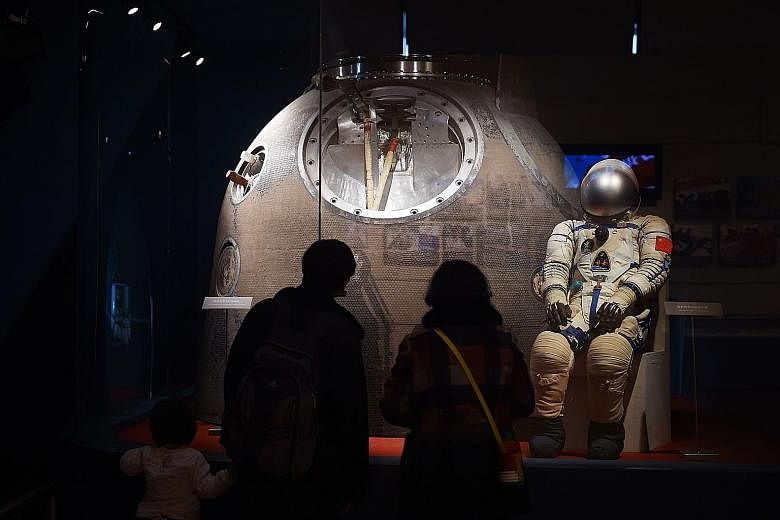BEIJING • China will launch a "core module" for its first space station some time around 2018, a senior official told the state-run Xinhua news agency yesterday, as part of a plan to have a permanent manned space station in service around 2022.
Advancing China's space programme is a priority for Beijing, with President Xi Jinping calling for the country to establish itself as a space power.
China insists that its space programme is for peaceful purposes, but the United States Defence Department has highlighted its increasing space capabilities, saying it was pursuing activities aimed at preventing adversaries from using space-based assets in a crisis.
The "core module" for the space station will be called the Tianhe 1, the Chinese word for the galaxy or Milky Way, Mr Wang Zhongyang, spokesman for the China Aerospace Science and Technology Corp, told Xinhua.
"Two space labs will be launched later and will dock with the core module, Tianhe 1," he said.
"The construction of the space station is expected to finish in 2022. If the International Space Station, which has extended its service, is retired by 2024, China's new space station will be the only operational one in outer space."
In a manned space mission in 2013, three Chinese astronauts spent 15 days in orbit and docked with an experimental space laboratory, the Tiangong 1, meaning "heavenly palace". This year, China will launch the second orbiting space lab, Tiangong 2, into space, and the Shenzhou 11 spacecraft, which will carry two astronauts and dock with Tiangong 2, Xinhua added.
Next year, China's first cargo spaceship, Tianzhou 1, which literally means "heavenly vessel", will attempt to dock with Tiangong 2, it said. China also plans a space telescope similar to the Hubble Space Telescope, which will "be on a separate space unit and share orbit alongside the space station", added Mr Wang.
China launched its first space lab, the Tiangong 1, in September 2011 and conducted two dockings with the module in the following two years. The Tiangong 1, which ran for 41/2 years, fulfilled its mission and ended service in March. It still remains in orbit and will descend gradually in the coming months until it burns up in the atmosphere.
China has been moving to develop its space programme for military, commercial and scientific purposes, but is still playing catch-up with established space powers - the United States and Russia.
China's Jade Rabbit moon rover landed on the moon in late 2013 to great national fanfare, but soon began experiencing severe technical difficulties. The Jade Rabbit and the Chang'e 3 probe that carried it there marked the first "soft landing" on the moon since 1976. Both the US and the Soviet Union had accomplished the feat earlier.
China has tested anti-satellite missiles and, in May 2013, also launched an object into space on a ballistic trajectory with a peak altitude of over 30,000km, putting it near geosynchronous orbit, where many nations have communications and Earth-sensing satellites.
XINHUA

